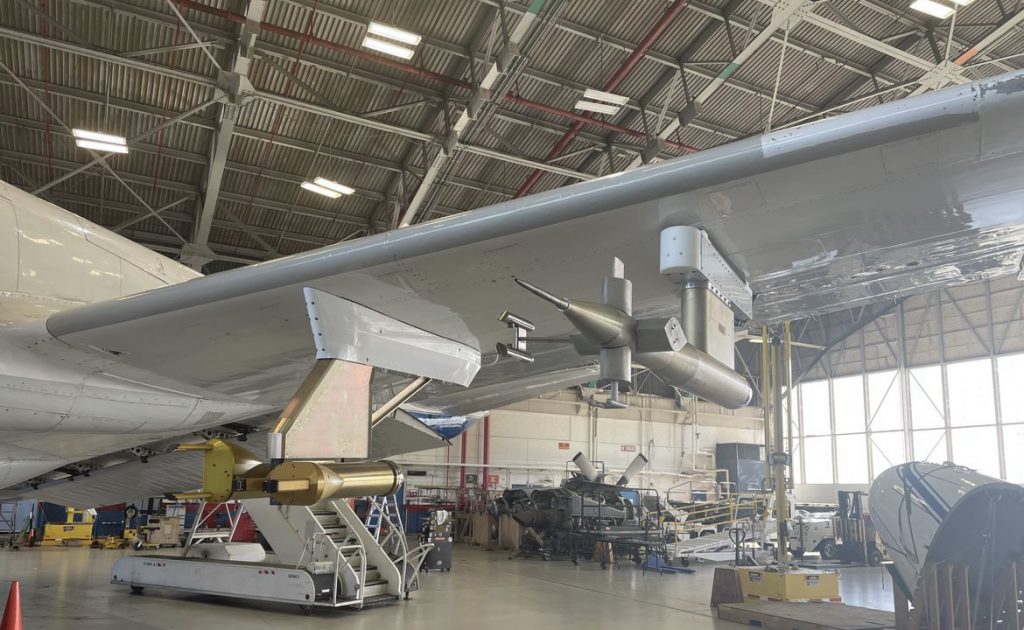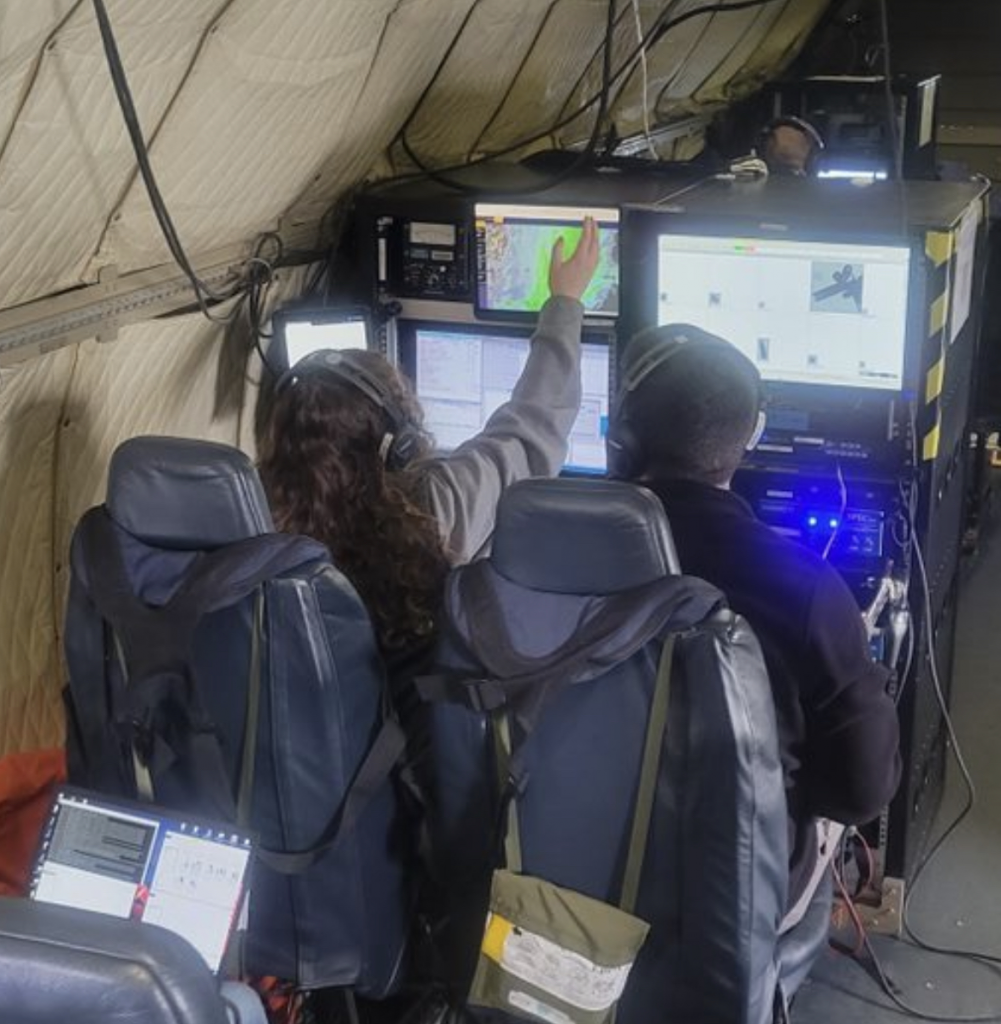By Abby Graf
Imagine the feeling of flying on an airplane. Smooth sailing, clear skies, not a cloud in sight. It’s a relaxing ride that many take for work or recreational travel. Now imagine flying through clouds, with the turbulence of different intensities. While some sink and hold onto their seats, others view it like a rollercoaster ride with their adrenaline pumping. Christian Nairy and Jennifer Moore know a thing or two about that.
Nairy and Moore, two atmospheric science graduate students at the University of North Dakota, are part of NASA’s Investigation of Microphysics and Precipitation for Atlantic Coast-Threatening Snowstorms (IMPACTS). Their job is to operate probes on one of two aircraft used in the experiments. The P-3 aircraft that houses their airborne office flies directly into the snowstorms, allowing the instruments Nairy and Moore operate to measure snow particles and atmospheric properties within the storm clouds.

IMPACTS is the first comprehensive study of snowstorms in the Northeastern United States in 30 years. The campaign combines satellite data, ground-based radars, weather balloon launches, computer simulations, and airborne instruments to understand snowstorms. The goal is to develop greater comprehension of winter storm formation and development by using several instruments that examine the microphysical characteristics of snow particles at various temperatures and altitudes. The data collected during the multi-year IMPACTS campaign can help advance the future of snowstorm forecasting and predictions.
“If we understand the microphysics of the clouds, what we’re seeing, when we’re seeing them, and how we’re seeing them, it gives scientists in other disciplines a better understanding of what they’re studying,” said Nairy. The IMPACTS experiments will provide robust datasets about winter snowstorms for scientists to analyze and incorporate into their own research.
Nairy and Moore have spent the last few months based at NASA’s Wallops Flight Facility in Virginia, spending their days troubleshooting problems and revamping the nine probes that are on each flight. When a storm is in the forecast, it’s go time. They arrive at the hangar to prepare the probes, computers, and flash drives that will accompany their research in the air. An hour before the plane takes off, they board the P-3 and continue prepping the cloud probes.
All but one of the probes hangs off the tips of the plane’s wings, away from the propellers, each having its own job: taking high-definition photos of ice particles, measuring the total amount of water (both in liquid and ice form), measuring the size of full and partial snow particles, and sampling shattered particles. These data-collecting tools can sample over 30 million particles in a single eight-hour flight alone.

“The whole point is to measure as much as we can when it comes to particles, concentration, sizes and particle habits,” says Moore. “We want to further our understanding of these storms and why they dump snow over the Northeast.”


Once the plane takes off, the team settles in for eight hours of flying and collecting data. Flying through the clouds isn’t always smooth sailing, though. Sometimes there’s turbulence and sometimes the storm quickly changes from snowflakes one minute to liquid water droplets the next. The transitions are quick, but the technology that captures these changes furthers the researchers’ understanding of how snowstorms work. While much of the flight involves looking at data in real-time, there are downtimes where conversation and collaboration can happen. The team chats with other researchers onboard, cracks jokes, takes notes of what they’re seeing and communicates with the IMPACTS HQ ground team at NASA Wallops.
IMPACTS Principal investigator Lynn McMurdie is on the ground at NASA Wallops as the flights take place. While the planes cruise at 300 mph at various altitudes within the storm, she’s constantly communicating with the teams, directing them to sample certain parts of the storm – like snow bands and when to make in-flight adjustments.
Snow bands are narrow structures in the atmosphere that are created by the storm itself. These banded structures tend to cause heavy snowfall. Not all storms produce these bands, however, and sometimes the bands don’t dump lots of snow, which furthers the importance of understanding just why, how, and when they do or don’t form.
“We decide where to fly based on forecasts of our storm of interest,” McMurdie shares. “We tend to draw a line or box of where we want to do our sampling, usually going across any banded structures from one side to the other. Going across the snow bands gives us variability in and outside of the band.”
Sampling snow bands with variability offers researchers’ an improved understanding of how the distribution of snow varies from storm to storm. It’s dependent upon two factors: storm strength and location. There are times when snow bands will drop many inches of snow within a short period of time, but other times when there’s only a light dusting of snow. Sampling from within and outside of the band, and at different altitudes, helps the team see the whole picture of precipitation and snow production.

“The more data we can get, the better we can predict and understand. It’s so important to try and fly in every storm we possibly can,” Moore says. “[The snow storms] can be really impactful, even if it’s an inch or two. You think you understand them, but then you actually get into the science of it. You learn so much more when you’re actually experiencing it.”
As the eight-hour flight prepares to land, Nairy and Moore’s work isn’t done. As soon as the P-3 touches down, the probes are shut off and covered, the data is downloaded to computers, and a post-flight briefing occurs. The two graduate students update and maintain the probes to ensure they’re ready for their next storm-chasing flight. And then it’s time to call it a day.
